Teresa Carr in Undark:
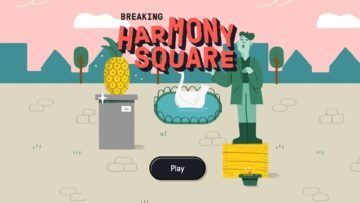 One idle Saturday afternoon I wreaked havoc on the virtual town of Harmony Square, “a green and pleasant place,” according to its founders, famous for its pond swan, living statue, and Pineapple Pizza Festival. Using a fake news site called Megaphone — tagged with the slogan “everything louder than everything else” — and an army of bots, I ginned up outrage and divided the citizenry. In the end, Harmony Square was in shambles.
One idle Saturday afternoon I wreaked havoc on the virtual town of Harmony Square, “a green and pleasant place,” according to its founders, famous for its pond swan, living statue, and Pineapple Pizza Festival. Using a fake news site called Megaphone — tagged with the slogan “everything louder than everything else” — and an army of bots, I ginned up outrage and divided the citizenry. In the end, Harmony Square was in shambles.
I thoroughly enjoyed my 10 minutes of villainy — even laughed outright a few times. And that was the point. My beleaguered town is the center of the action for the online game Breaking Harmony Square, a collaboration between the U.S. Departments of State and Homeland Security, psychologists at the University of Cambridge in the United Kingdom, and DROG, a Dutch initiative that uses gaming and education to fight misinformation. In my role as Chief Disinformation Officer of Harmony Square, I learned about the manipulation techniques people use to gain a following, foment discord, and then exploit societal tensions for political purposes.
More here.

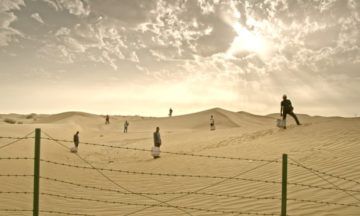 Akomfrah plays fast and loose with time and place, the real and the constructed, to make larger, more complex narratives. A second three-screen video, Triptych, set in an unnamed location, is a panoply of street portraits. The title is taken from a track by jazz drummer and composer
Akomfrah plays fast and loose with time and place, the real and the constructed, to make larger, more complex narratives. A second three-screen video, Triptych, set in an unnamed location, is a panoply of street portraits. The title is taken from a track by jazz drummer and composer  Barbara Hepworth’s life was by any standard a remarkable one. It was a triumph of determination. She did not come from a deprived background: her father was a civil engineer who became a well-respected county surveyor for the West Riding of Yorkshire. She went to a good school and was exceptionally gifted musically. She wrote with great clarity and was an accomplished draughtswoman. She sailed into Leeds School of Art and in 1921 won a senior scholarship to the Royal College of Art, then under the invigorating leadership of the recently appointed William Rothenstein. At the college, which at the time occupied a building attached to the Victoria and Albert Museum, she chose to concentrate on sculpture, drawing from casts, modelling in clay, carving reliefs in plaster, with some stone and wood carving too. It was a traditional education, undertaken alongside another student from Yorkshire, Henry Moore.
Barbara Hepworth’s life was by any standard a remarkable one. It was a triumph of determination. She did not come from a deprived background: her father was a civil engineer who became a well-respected county surveyor for the West Riding of Yorkshire. She went to a good school and was exceptionally gifted musically. She wrote with great clarity and was an accomplished draughtswoman. She sailed into Leeds School of Art and in 1921 won a senior scholarship to the Royal College of Art, then under the invigorating leadership of the recently appointed William Rothenstein. At the college, which at the time occupied a building attached to the Victoria and Albert Museum, she chose to concentrate on sculpture, drawing from casts, modelling in clay, carving reliefs in plaster, with some stone and wood carving too. It was a traditional education, undertaken alongside another student from Yorkshire, Henry Moore. Few researchers have had the pop culture impact of Suzanne Simard. The University of British Columbia ecologist was the model for Patricia Westerford, a controversial tree scientist in Richard Powers’s 2019 Pulitzer Prize–winning novel The Overstory. Simard’s work also inspired James Cameron’s vision of the godlike “Tree of Souls” in his 2009 box office hit Avatar. And her research was prominently featured in German forester Peter Wohlleben’s 2016 nonfiction bestseller The Hidden Life of Trees.
Few researchers have had the pop culture impact of Suzanne Simard. The University of British Columbia ecologist was the model for Patricia Westerford, a controversial tree scientist in Richard Powers’s 2019 Pulitzer Prize–winning novel The Overstory. Simard’s work also inspired James Cameron’s vision of the godlike “Tree of Souls” in his 2009 box office hit Avatar. And her research was prominently featured in German forester Peter Wohlleben’s 2016 nonfiction bestseller The Hidden Life of Trees.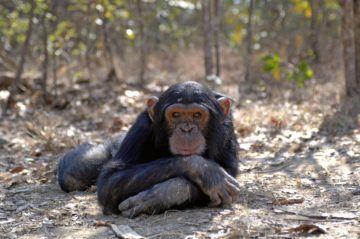 Julia, her friends and family agreed, had style. When, out of the blue, the 18-year-old chimpanzee began inserting long, stiff blades of grass into one or both ears and then went about her day with her new statement accessories clearly visible to the world, the other chimpanzees at the Chimfunshi wildlife sanctuary in Zambia were dazzled.
Julia, her friends and family agreed, had style. When, out of the blue, the 18-year-old chimpanzee began inserting long, stiff blades of grass into one or both ears and then went about her day with her new statement accessories clearly visible to the world, the other chimpanzees at the Chimfunshi wildlife sanctuary in Zambia were dazzled.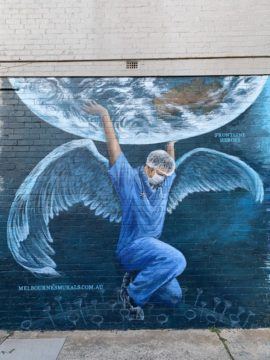 The bag of drugs is sitting untouched on the kitchen bench beside the cans of diced tomatoes and chickpeas I’d earlier quarantined. They – cans not drugs – may be useful, I think, although in less apocalyptic times, I might prefer to soak dried chickpeas to make hummus or chana masala. The chickpea glut follows a 9pm masked assault of Harris Farm Leichhardt and the fact the ex has recently turned up unannounced with a care package of more canned pulses, organic brown rice and greens than I have room to store. An Amma devotee never known to hug spontaneously, he’d stood at the mandated distance of one Kylie Minogue on the other side of my gate (less gateless gate than gate that never shuts properly, the broken latch, I observed as he handed me the box, one of the ten thousand things now unlikely to be repaired…).
The bag of drugs is sitting untouched on the kitchen bench beside the cans of diced tomatoes and chickpeas I’d earlier quarantined. They – cans not drugs – may be useful, I think, although in less apocalyptic times, I might prefer to soak dried chickpeas to make hummus or chana masala. The chickpea glut follows a 9pm masked assault of Harris Farm Leichhardt and the fact the ex has recently turned up unannounced with a care package of more canned pulses, organic brown rice and greens than I have room to store. An Amma devotee never known to hug spontaneously, he’d stood at the mandated distance of one Kylie Minogue on the other side of my gate (less gateless gate than gate that never shuts properly, the broken latch, I observed as he handed me the box, one of the ten thousand things now unlikely to be repaired…).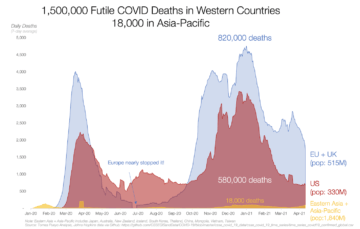 Soon, over 1.5 million people will have died of COVID in Western countries.
Soon, over 1.5 million people will have died of COVID in Western countries.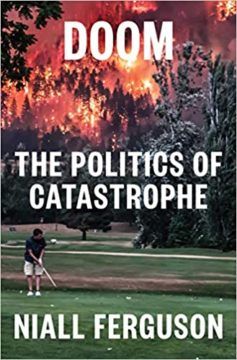 Niall Ferguson’s new book,
Niall Ferguson’s new book,  It is a truth universally acknowledged—at least by those of the feline persuasion—that an empty box on the floor must be in want of a cat. Ditto for laundry baskets, suitcases, sinks, and even cat carriers (when not used as transport to the vet). This behavior is
It is a truth universally acknowledged—at least by those of the feline persuasion—that an empty box on the floor must be in want of a cat. Ditto for laundry baskets, suitcases, sinks, and even cat carriers (when not used as transport to the vet). This behavior is 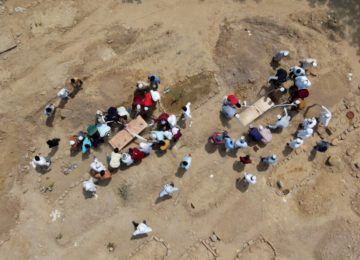 The actual problem for India is huge. According to estimates, only 2.2 percent of the current population has been fully vaccinated. India needs 200 to 230 million vaccines a month to vaccinate its 1.5 billion population. Hardly any are available; the much-touted vaccination drive that would make the vaccine available to everyone over eighteen years old lies in disarray. Adar Poonawalla, the CEO of the Serum Institute, has come under fire for undersupply of vaccines and “profiteering” from Covishield, a version of the Oxford AstraZeneca vaccine. (India
The actual problem for India is huge. According to estimates, only 2.2 percent of the current population has been fully vaccinated. India needs 200 to 230 million vaccines a month to vaccinate its 1.5 billion population. Hardly any are available; the much-touted vaccination drive that would make the vaccine available to everyone over eighteen years old lies in disarray. Adar Poonawalla, the CEO of the Serum Institute, has come under fire for undersupply of vaccines and “profiteering” from Covishield, a version of the Oxford AstraZeneca vaccine. (India 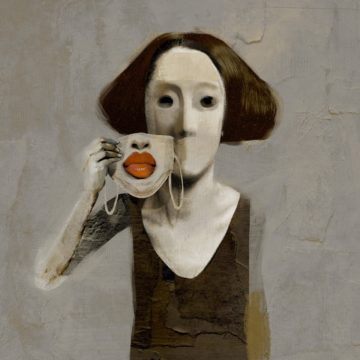 M
M Lily Hu in Boston Review:
Lily Hu in Boston Review: Branko Milanovic over at his Substack:
Branko Milanovic over at his Substack: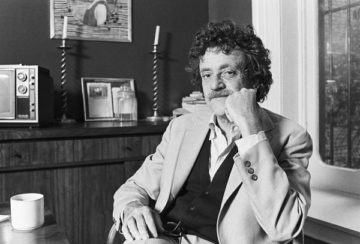 Matthew Gannon and Wilson Taylor in The Tribune:
Matthew Gannon and Wilson Taylor in The Tribune: